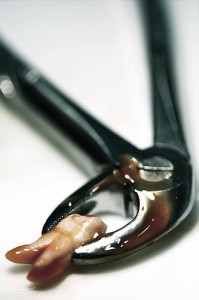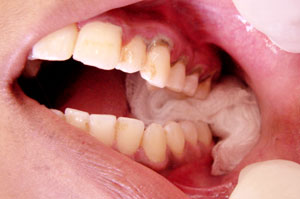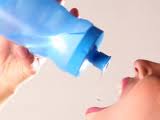Teeth extractions are usually done to relieve dental pain or remove loose teeth. However even though your initial problem is solved, you have to take care of the tooth socket which the tooth was extracted or further complications may follow.
Post-operative care instructions would normally be provided by the dentist, in which you will have to follow. If there are any complications after your tooth extraction, always consult your dentist. Do not wait till the problem worsen.
Care of Mouth After Tooth Extraction
Post-extraction bleeding
Usually immediately after dental tooth extraction the dentist will place a small piece of gauze over the extraction socket and instruct you to bite firmly for at least 30 minutes. If the bleeding persists, replace the gauze piece with a new one and bite firmly again for another 30 minutes. Repeat till bleeding stops.
During this period, try to minimize talking for three to four hours. There will be slight oozing for 24 hours which is normal but do be reminded that most of it is saliva.
Avoid smoking, drinking with straw, and spitting for 12 hours for these activities generate negative pressure that can dislodge the blood clot which has formed in the tooth socket and promote bleeding.
If you experience prolonged bleeding, bright red bleeding and/or large blood clots, return to the dentist for further management.
Post-extraction pain
There are three types of pain experienced after tooth extraction:
- The common post-extraction pain is not severe and can be managed in most individuals with mild painkillers.
- Peak pain that occurs about 12 hours after extraction and diminishes rapidly after that.
- Persisting pain longer than 2 days after extraction.
It will take 90 minutes for the painkiller to become effective so the first dose of painkiller should be taken before the effect of the local anesthetic solution subsides. Too much of medication can cause drowsiness and increased chance of stomach upset, especially NSAIDs. If proper procedures are followed, mild painkillers given for a short time (usually not longer than 3 days) is enough.
Diet
High calorie or high volume liquid diet is usually advised after teeth extraction for 24 hours. Ensure that you have adequate drinks like milk, juice or water to prevent dehydration. Cool foods like ice-cream can be taken to numb the tooth extraction site. Avoid hot and spicy foods for they can increase the blood circulation in the mouth and promote bleeding.
Food should be taken after the local anesthetic solution has worn off to avoid biting the lip, tongue or cheek. Chewing should be done on the opposing side of the site of tooth extraction to avoid food debris from entering the socket. Diabetic patients should return to their normal insulin and routine diet as early as possible
Oral hygiene
A good oral hygiene will result in more rapid healing of the extraction site.
On the day of extraction, brush the teeth that are away from the area of extraction, and avoid brushing the teeth immediately adjacent to the extraction site. For the first 24 hours avoid gargling.
Next day gentle rinses with warm water or salt water can be done. Normal tooth brushing can be resumed on the 3rd or 4th day. In cases of individuals who are compromised, chlorhexidine mouth washes will be prescribed.
Swelling or Edema
Minimal swelling (edema) or no swelling is seen in single tooth extraction. However multiple teeth extractions or wisdom tooth extraction can result in swelling. The swelling reaches peak after 24 to 88 hours of extraction or surgical procedure and will begin to subside on the 3rd or 4th day post-operatively. Ice packs for can be placed for 20 minutes followed by rest within 24 hours. On the 2nd day nothing should be applied. On the 3rd day hot water bottle or heating pads can be placed.
Difficulty in opening the mouth or Trismus
Some individuals may experience difficulty in opening the mouth after extraction of teeth. This condition is due to spasm of muscles which is mostly due to multiple injections penetrating the jaw muscle. It is usually not too severe. However if it persists, application of moist heat may help. Another cause could be infection, in which antibiotics will need to be prescribed.
Brusing or Ecchymosis
Bruising is the collection of blood in the subcutaneous tissue, and mostly in older individuals due to decrease muscle tone and weaker tissue attachment. Usually appearing blue in color, this condition is not dangerous. It does not increase pain or infection. Sometimes bruising can be seen in the neck or below the jaw. Bruising usually occurs after 2 days and will resolve by itself within 7 to 10 days.
Post-extraction follow up visit
If sutures or stitches were placed over the extraction socket, a routine follow up will be given after one week. The socket will be checked for normal healing signs, in which there should be no inflammation, swelling, infection or pus discharge. A dry socket is suspected if there is pain in the 3rd to 4th post-operative day with no swelling or infection. If everything is well, the sutures are removed.



